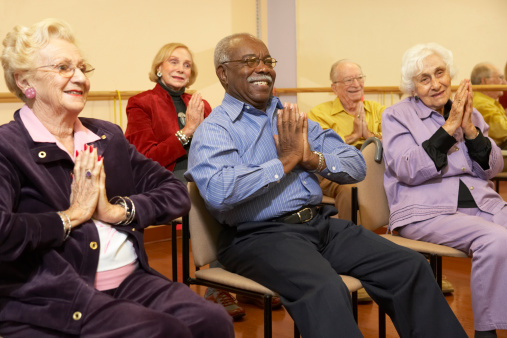
As the nation’s elderly population balloons, nursing homes across the country have seen a demographic shift in their residents. More Hispanic, black and Asian elders are moving into nursing homes while white residents choose other options.
A recent study by Brown University researchers published in the journal Health Affairs found that this nationwide trend is driven in part by changing demographics, such as the rapid growth of elderly minority populations.
But the study, released in July, also found that the increase in the proportion of minority nursing homes residents indicates a lack of access to home and community-based alternatives, which are generally preferred for long-term care. Whites, who have greater economic resources on average, are finding better housing alternatives as they reach old age.
This article is one in an occasional series on aging with dignity, independent living and public policy that affects both. For a complete archive of the articles, click here.
“We know those alternatives are not equally available, accessible, or affordable to everybody, certainly not to many minority elders,” said Zhanlian Feng, assistant professor of community health at Brown University’s medical school and the study’s lead author. “Most elders would rather stay in their homes, or some place like home, but not a nursing home unless they have to.”
The researchers found that between 1999 and 2008, the number of elderly Hispanics living in U.S. nursing homes climbed by 54.9 percent while the number of Asians increased by 54.1 percent. The number of black residents rose 10.8 percent. During the same 10-year period, the number of white nursing home residents in the U.S. dropped by 10.2 percent.
In the Los Angeles/Long Beach region, the residency increases were also significant with a 56 percent increase in the Asian population and 41 percent rise among Hispanics. The increase for blacks was slight, only 1 percent.
Patricia McGinnis, the executive director of California Advocates for Nursing Home Reform, agreed that minorities as a group tend to be less able to afford Residential Care Facilities or home care aides who charge about $15 to $20 an hour.
California currently has more than 7,600 residential care facilities, up from about 5,500 a decade ago, she said. The average rate for those facilities, which generally offer more freedom and personal attention to residents, can cost $5,000 a month.
“Lets face it — money issues and a disparity in income and assets in minority communities is still there,” said McGinnis. “Unless you have savings, people are priced out of the market.”
To conduct the study, Brown researchers used data from a federal survey, which collects periodic information on nursing home residents, their race, ethnicity, the size of their population, and where in the U.S. they live. They used information from the Census Bureau’s Metropolitan Statistical Areas to gather information on the racial and ethnic mix of nursing home residents and the demographic shifts in urban areas.
These demographic shifts in the composition of nursing home populations are taking place within a rapidly shifting long-term care landscape. There are currently 76 million baby boomers in the nation; the oldest of them will turn 65 years old in 2011. The Census Bureau projects by 2030, 20 percent of the U.S. population will be sixty-five or older. Today that figure is 13 percent.
The population of older racial and ethnic minorities is slated to grow particularly swiftly. The number of older Hispanics, for instance, is projected to jump from under 1.8 million in 2000 to over 8.6 million by 2030. The number of elderly Asians is expected to balloon from 0.8 million to 3.8 million.
At the same time, elderly people don’t have the support at home or the social structures of previous generations. People don’t live as close to their relatives as they did in the past. Couples are having fewer children and often both have to work outside the home and are unable to provide full time care to their elderly or ill parents.
These dramatic societal changes have prompted the government to alter certain policies and priorities. There has been a shift in support from nursing home care to favoring home-and community-based services, the study said, which cost significantly less than institutional care. A significant change was the passage of the Medicaid “waivers” authorized in 1981 in the Social Security Act. It allows recipients to use their Medicaid dollars to pay for personal care and other supportive services, enabling more beneficiaries to live at home or in a residential setting.
Older adults and those with disabilities prefer living independently at home or in community-based alternatives, according to a related study published in Health Affairs that examined what people want from long-term care. Assisted living allows people to have more freedom; a skilled nursing facility is more confined and has more supervision.
The Brown University study cites earlier research, which shows that minorities, even if they had the means, have other disadvantages when it comes to finding quality care. Nursing homes in largely minority areas are often of lesser quality and are more likely to close, while assisted living facilities are more likely to proliferate in high-income areas.
Eli Quinones, President and CEO of Alliance Nursing Centers, Inc., operates three nursing homes in El Monte. But he said the residents of his nursing homes, 90 percent of whom are Chinese, tell him they feel safer and more comfortable in his facilities. But Quinones said that in his industry in general, he sees how the cost of care can be a factor in the demographic makeup of a nursing home population.
“Assisted living has become quite popular and it’s also very expensive,” he said. “When it comes to economics, white folks are able to afford a different level of care.”





